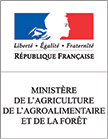
I think that the experiences most important for my awareness of landscapes come from my early understanding of people’s relationships with their environments in rural New England. I grew up working on a multi-generational, family farm in the center of the small town of Bradford, Vermont which provided a very personal understanding of the larger landscape issues in the state. Most of the industries that support Vermonters are tied to the landscape in some way. These experiences are a part of why I now work to identify the potential synergies and trade-offs between our desires to use, protect, conserve, and restore landscapes.
Vermont is a beautiful and fascinating state. It is considered to be the most rural state in the US as a large percentage of its residents live in communities of less than 2,500. Manufacturing, agriculture and service (catering to the many tourists that come to see and enjoy our landscape) are the top industries. The region is known for its quarried and finished stone, dairy products (Cabot Cheese anyone?) and maple syrup among other products. In fact, Vermont is the largest producer of maple syrup in the US, second over all, only coming in behind Quebec, Canada. It is also known for its Green Mountains and the fantastic skiing opportunities they provide. This is to say nothing of the hunting, fishing and other recreational opportunities that support locals both with goods and financial security. The upshot is, Vermonters are hugely invested in their landscape.
However, such varied industries are not always in harmony. Different uses change the landscape in different ways and this can be seen throughout Vermont’s history. For instance, estimates suggest that in the 1760s, 90 percent of Vermont was covered by old growth forest. As logging and agriculture increased in the 1880s and 1890s, many forests were cleared and as a result, approximately 70 percent of Vermont’s forests were clear cut. Today, thanks to restoration activities, almost 80 percent of Vermont is forested and there is a new appreciation for these landscapes and the many opportunities they provide. I wasn’t always aware of the history of the Vermont landscape but I did understand its value and complexity to the people.
Pierson Farm, where I worked, is a local institution of Bradford. It sits right next to the only traffic lights in the county, across the street from the main regional gas station and between the old north-south route road and the highway that has since replaced it. The landscape has changed around it but the farm persists. I saw first-hand the tensions between the money made from farming the land and the potential, sometimes larger pay-out for selling it to be developed. I also understood, however, the value of the human-environment relationships and the livelihoods made from the landscape.
I worked with not only customers seeking produce but also suppliers, other farmers growing crops such as berries or dairy, folk who provided local goods to sell seasonally (honey or baked items, for example), and hunters stopping in on their way to get their yearly buck to make sure they had venison for the winter. It was this view from the local scale that really gave me the best insight into the complexities of human-environment interactions and the pressures placed on landscapes to deliver so many different, sometimes competing functions.
I think that landscape issues are incredibly complex and need to be addressed at all scales but I cannot forget the values instilled in me by the Vermont landscape and the understanding gained from experiencing such tensions first-hand, particularly to the communities within the landscape.
Marie Longnecker is one of the 10 young champions who will work on the “ Landscape restoration ” challenge with Youth program’s partner: WLE (CGIAR).
Learn more about the Global Landscapes Forum’s Youth program, meet our 50 youth champions and discover the 5 Landscapes challenges they will take up, in December, in Paris.





































